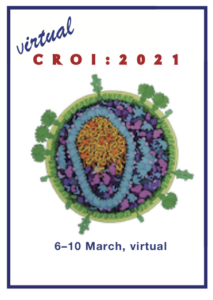Dolutegravir superior to standard of care in children and adolescents: results from the ODYSSEY trial
1 June 2021. Related: Conference reports, Paediatric care, CROI 28 (virtual) 2021.
Dolutegravir (DTG)-based treatment outperformed standard of care (SOC) at 96 weeks in first- and second-line regimens in children and adolescents – according to data presented at CROI 2021.
ODYSSEY (PENTA-20) is an international, multi-centre, randomised, non-inferiority trial looking at DTG + 2 NRTIs vs standard-of-care (SOC) in children starting first- or second-line ART.
The data shown was from the main trial including participants aged less than 18 years and weighing at least 14 kg.
The primary outcome was virological or clinical failure. This was defined as: confirmed viral load >400c/mL after week 36; insufficient virological response, <1 log drop by week 24 and ART switch for treatment failure; new or recurrent severe 3 or 4 event and death due to any cause.
Overall, 707 children and adolescents were randomised. The majority (88%) were from African sites: Uganda 47%, Zimbabwe 21%, South Africa 20%, Thailand 9% and Europe 4%. Median age was 12.2 years (range 2.9 to 18) and weight 31 kg (range 14 to 85); 49% were girls and 22% had CD4 <200 cells/mm3.
In ODYSSEY A, 311 children started first-line ART: 154 DTG and 157 SOC (92% efavirenz [EFV]). NRTI backbones were: abacavir (ABC)/lamivudine (3TC) (78%%) and remainder tenofovir disoproxil fumarate (TDF)/3TC or emtricitabine (FTC) (20%).
In ODYSSEY B, 396 started second-line ART: 196 DTG and 200 SOC (72% lopinavir/ritonavir [LPV/r] and 25% atazanavir/ritonavir [ATV/r]). NRTI backbones were: ABC/3TC (55%); TDF/3TC or FTC (26%) or zidovudine (AZT)/3TC (19%). Previous ART exposure was for a median of 5.5 years with 97% receiving NNRTI + 2 NRTIs.
In the total study population, 47 (14%) participants receiving DTG vs 75 (22%) receiving SOC had clinical or virological failure at week 96. Difference –8% (95% CI: –13.5 to –2.6); p=0.004. This difference allowed the investigators to conclude non-inferiority and superiority of DTG.
In ODYSSEY A, 15 (10%) receiving DTG vs 34 (23%) SOC had clinical or virological failure. Difference –12.5% (95% CI: –20.6 to –4.3); p=0.003 (superior). In ODYSSEY B, 32 (17%) receiving DTG vs 41 (21%) SOC had clinical or virological failure. Difference –4.6% (95% CI: –11.8 to 2.7); p=0.22 (non-inferior).
The investigators reported no significant differences between groups A and B, p=0.16. There were also no significant differences in treatment effect by sex, weight, age, baseline viral load or CD4. The benefit of DTG was apparent at 48 weeks and continued to 144 weeks (difference >9%).
Overall there were 10 WHO stage 3 to 4 events (most were stage 4) in 8 participants in the DTG group and 8 events in 8 participants in the SOC group, p=0.97. There were 5 deaths, 2 in the DTG and 3 in SOC groups.
Similar proportions of participants in DTG and SOC groups had one or more or grade 3 and above SAEs. There were more ART-modifying events in SOC vs DTG groups, p=0.01.
At week 48 and 96 gains in CD4 count and percentage were similar in DTG and SOC. Mean change in total cholesterol favoured DTG at 48 and 96 weeks, p<0.001.
There was a slightly greater increase in weight, height and BMI in DTG than SOC groups: differences 1.0 kg, 0.8 cm and 0.3 kg/m2 respectively at 96 weeks. These differences were statistically significant and occurred early and stabilised.
comment
These findings support WHO guidelines that recommend DTG-based regimens as preferred ART for children weighing at least 14 kg starting first- or second-line ART – which allows some harmonisation with adult treatment programmes.
Results for children weighing less 14 kg will be available mid-2021.
Reference
Turkova A et al. Dolutegravir-based ART is superior to NNRTI/PI-based ART in children and adolescents. CROI 2021 (virtual). 6–10 March 2021. Oral abstract 174.
https://www.croiconference.org/abstract/dolutegravir-based-art-is-superior-to-nnrti-pi-based-art-in-children-and-adolescents/ (abstract)
http://www.croiwebcasts.org/p/2021croi/croi/174 (webcast)


 Polly Clayden, HIV i-Base
Polly Clayden, HIV i-Base